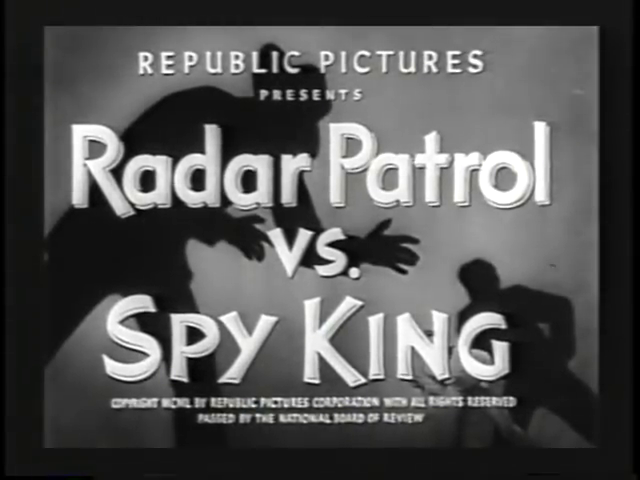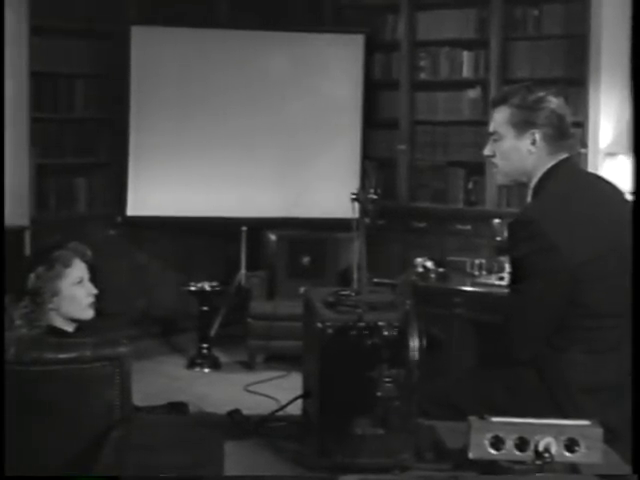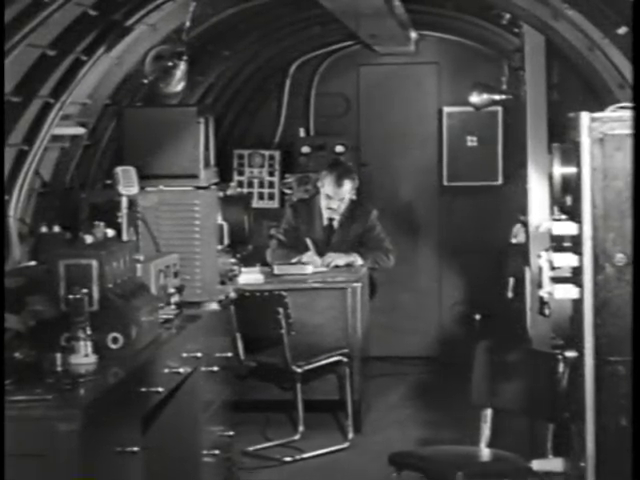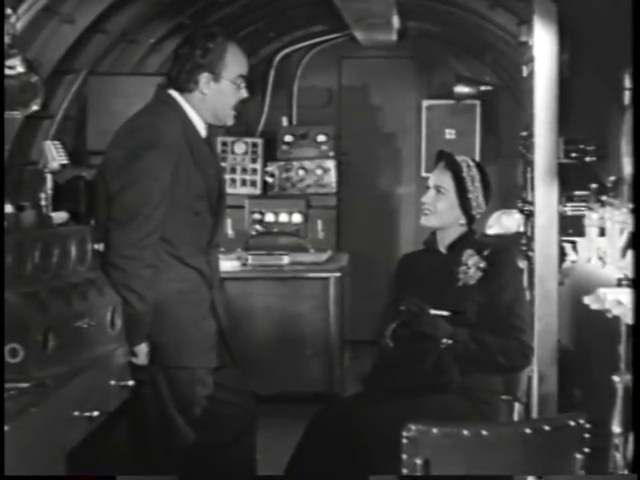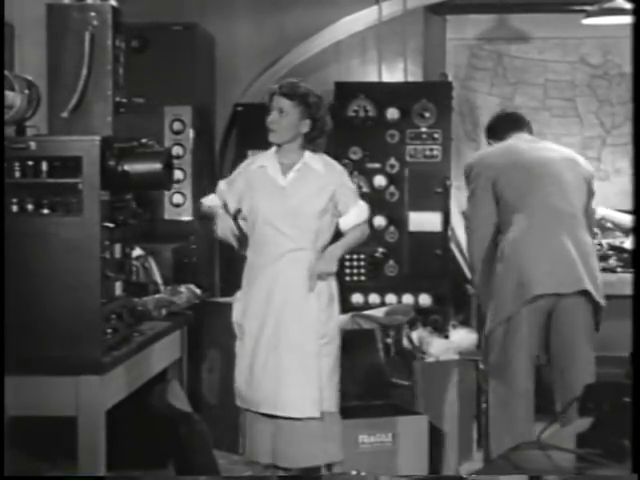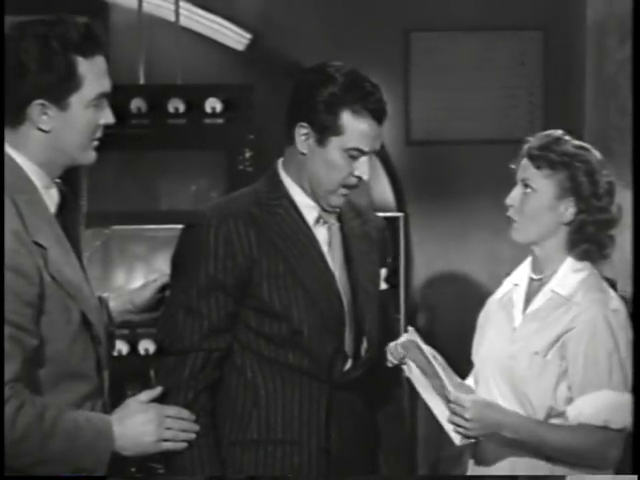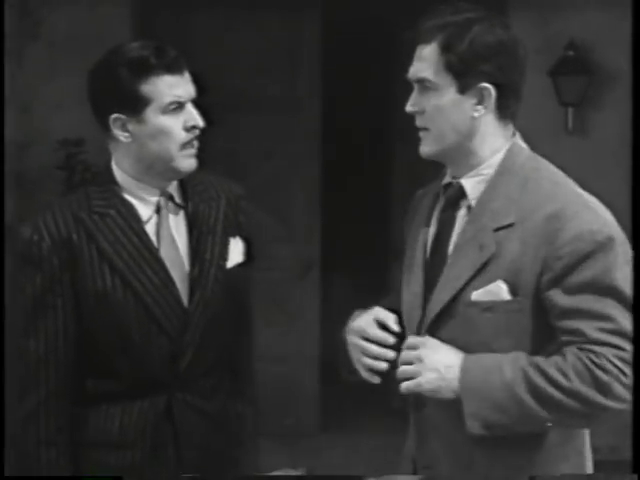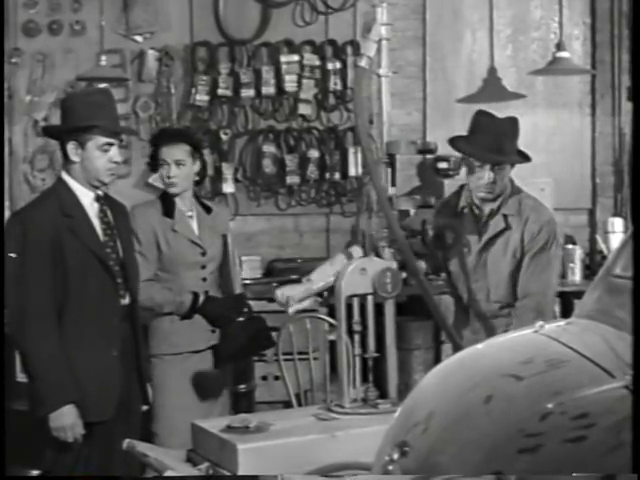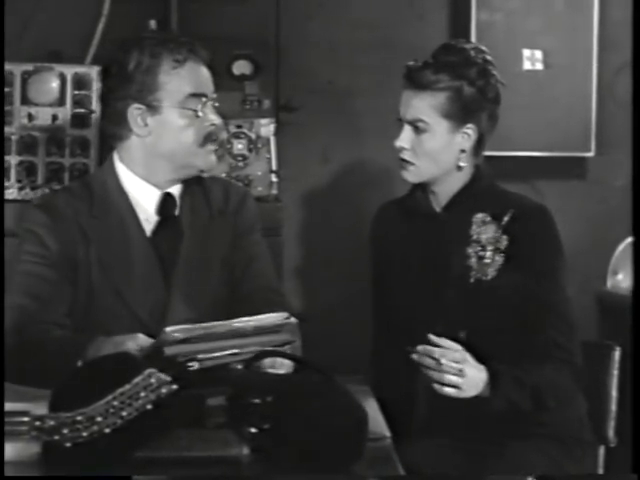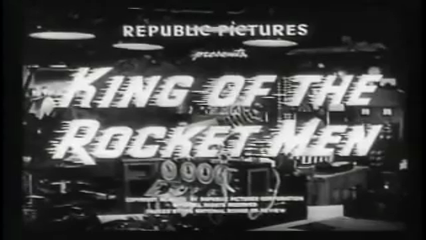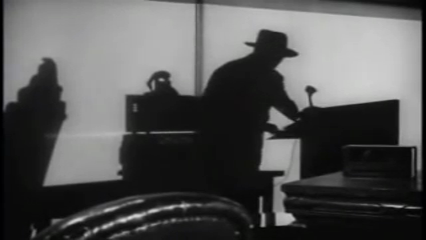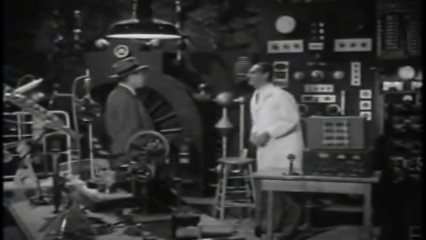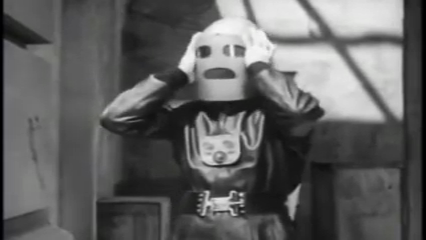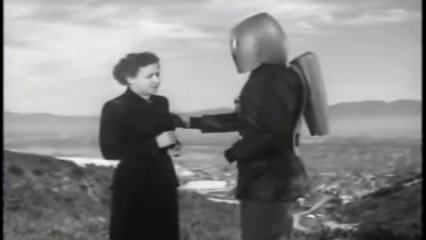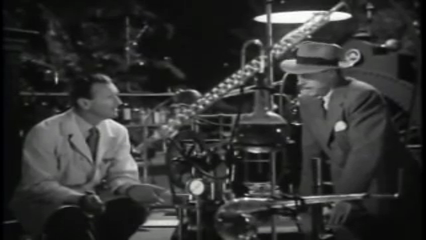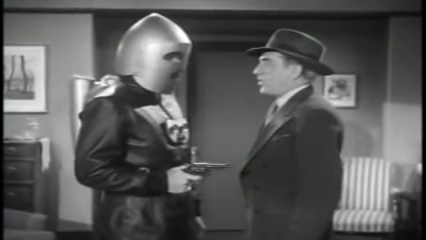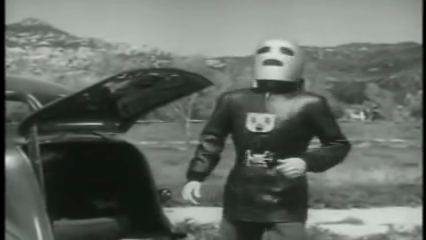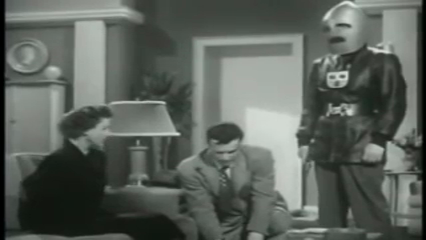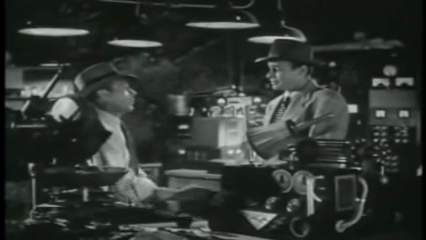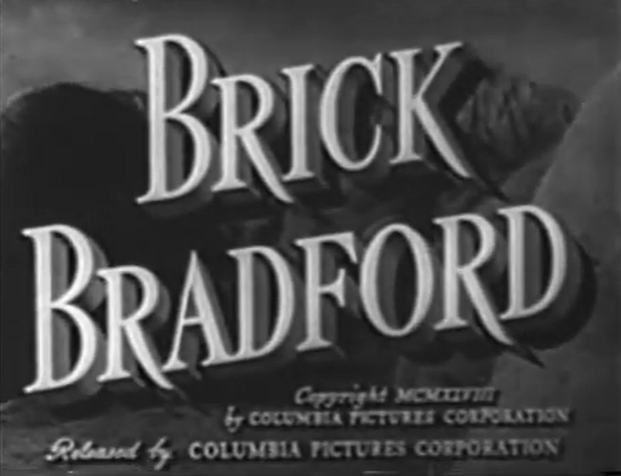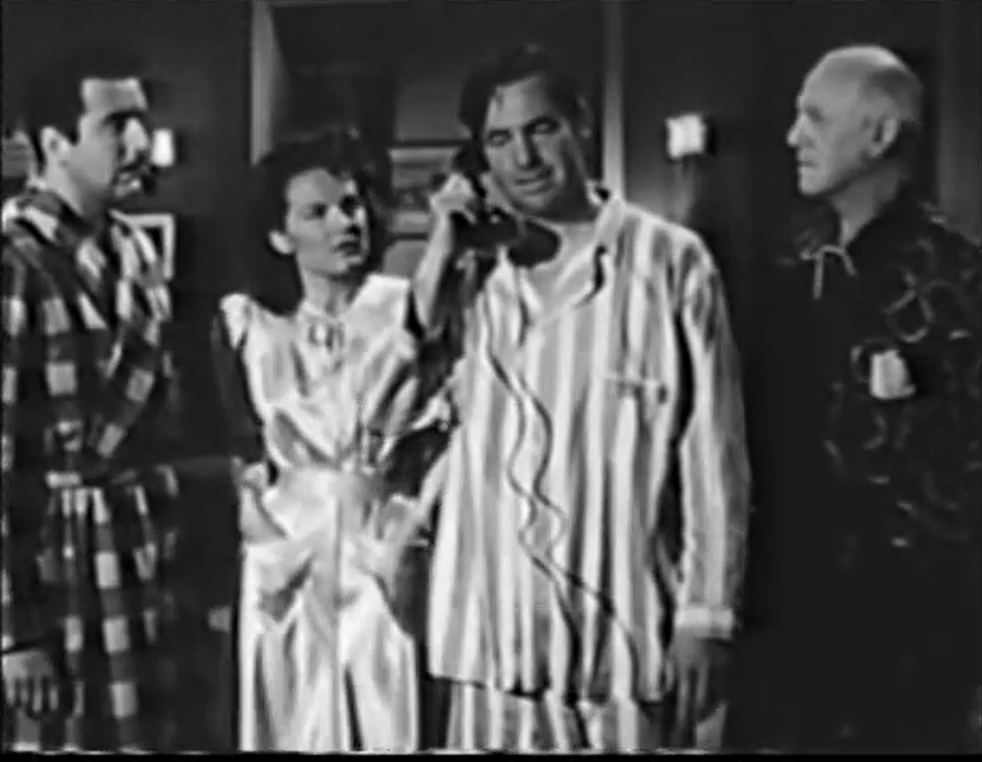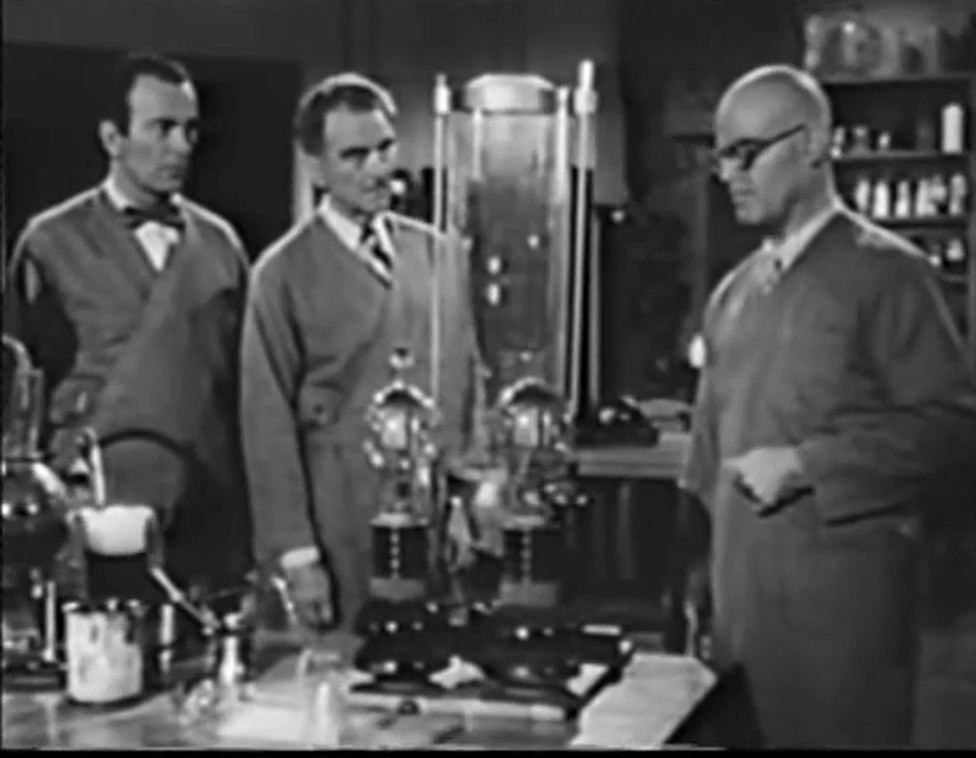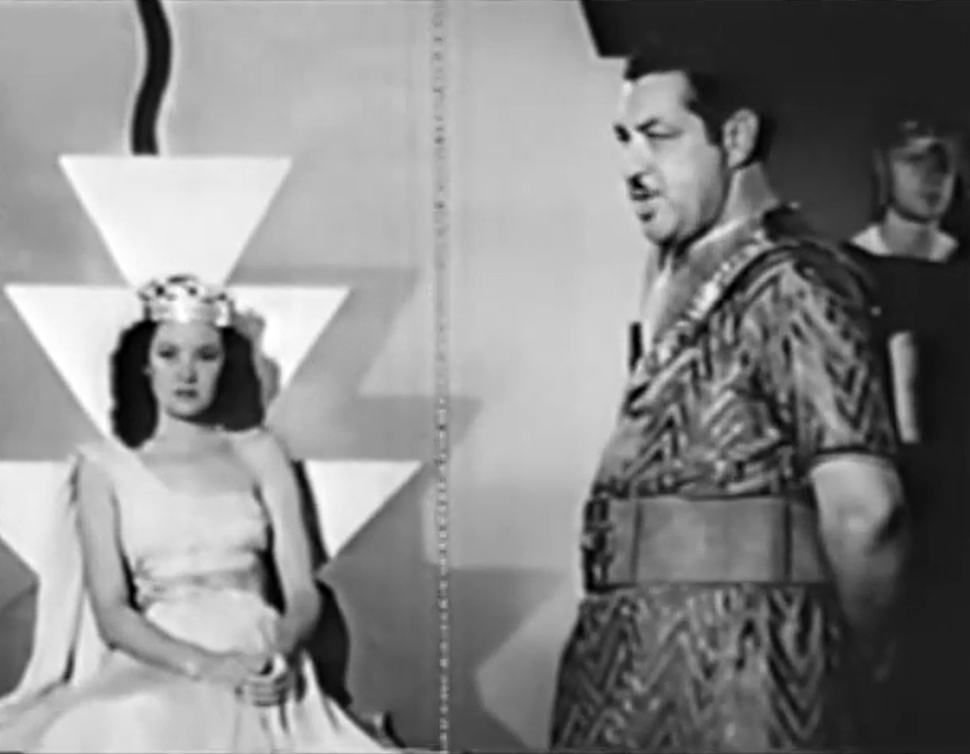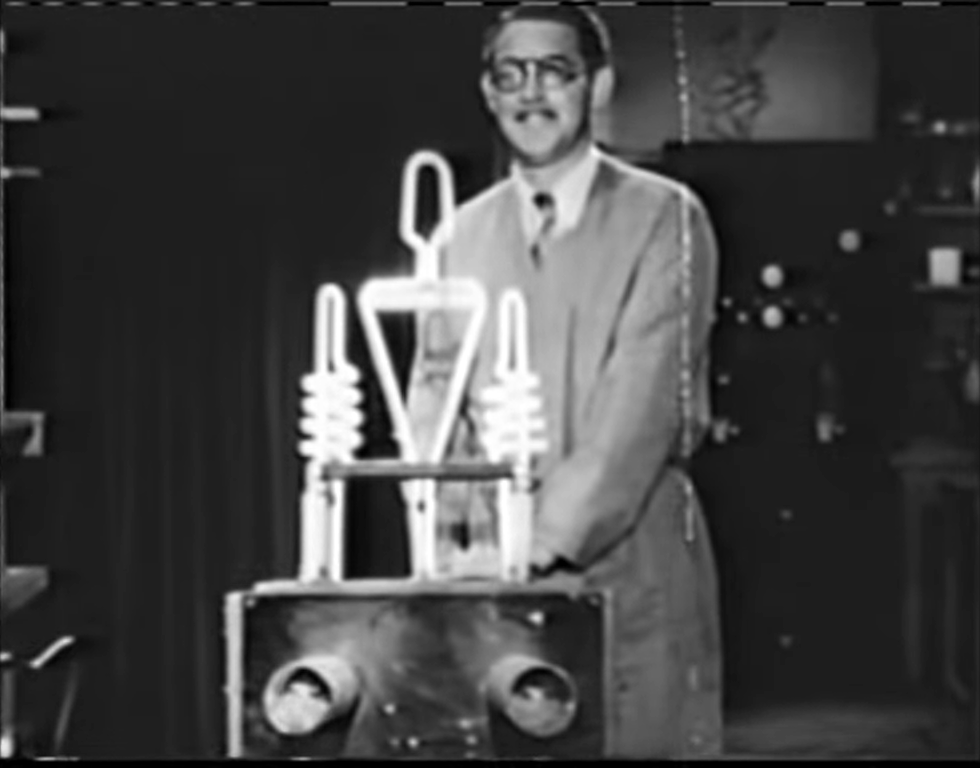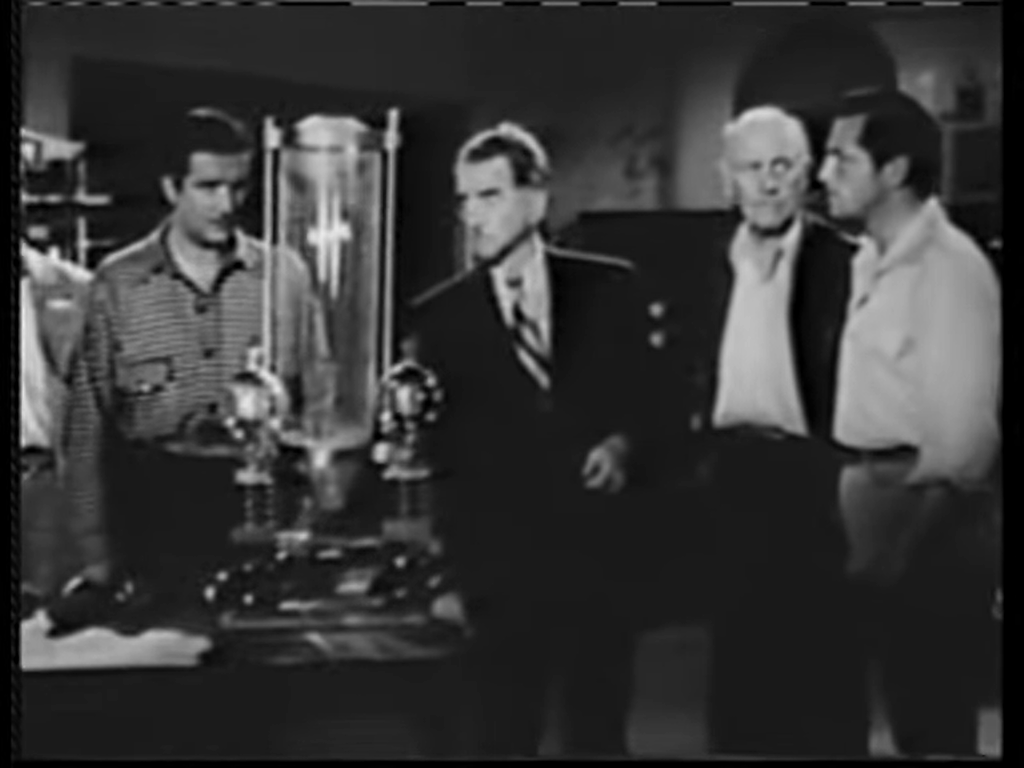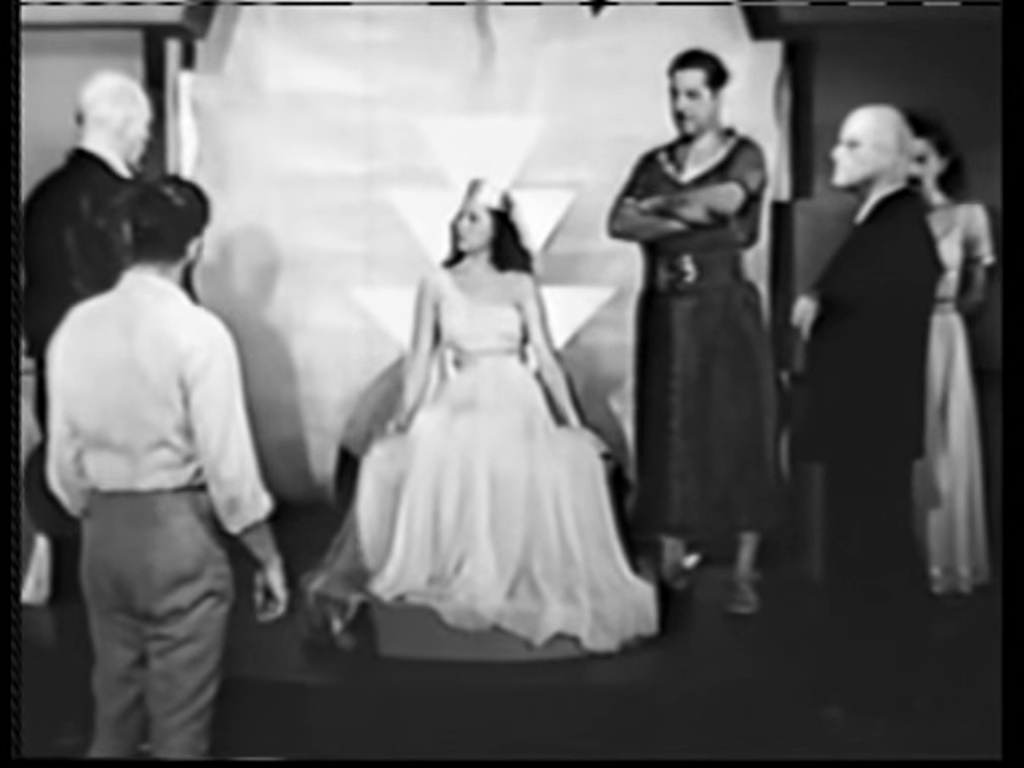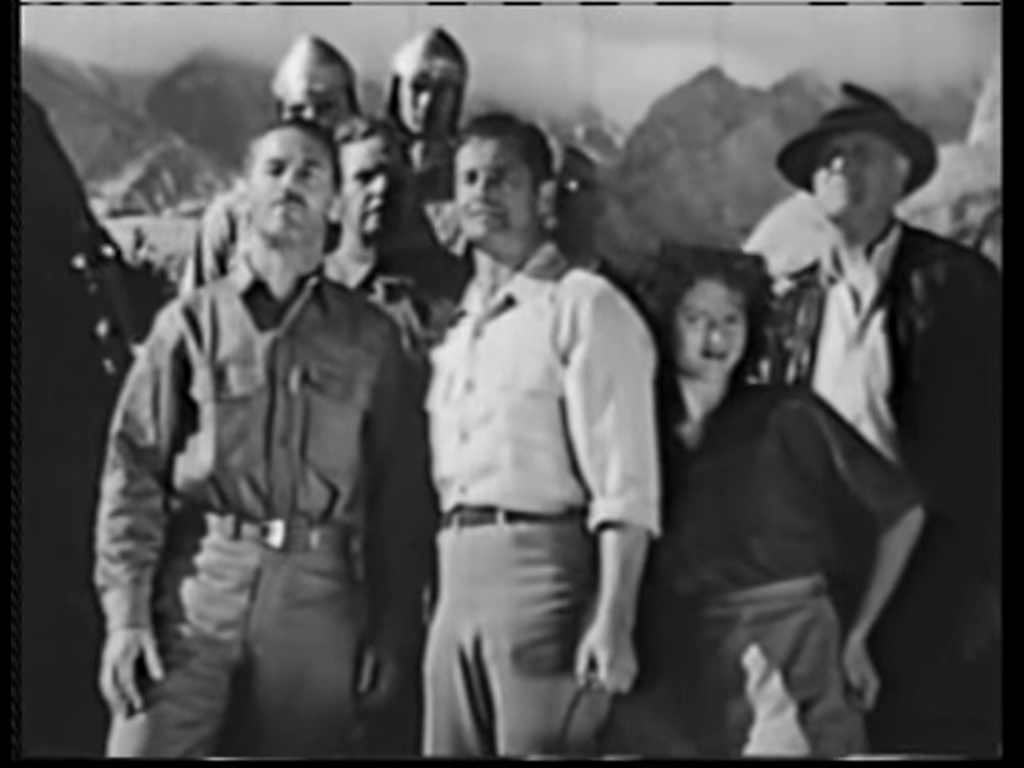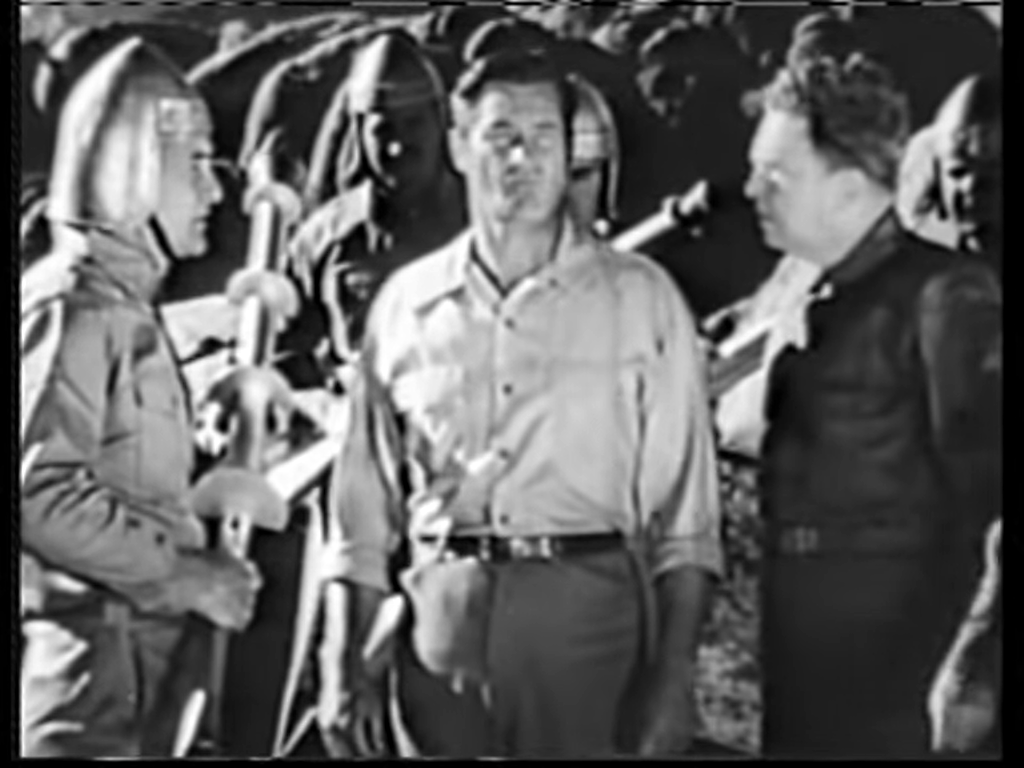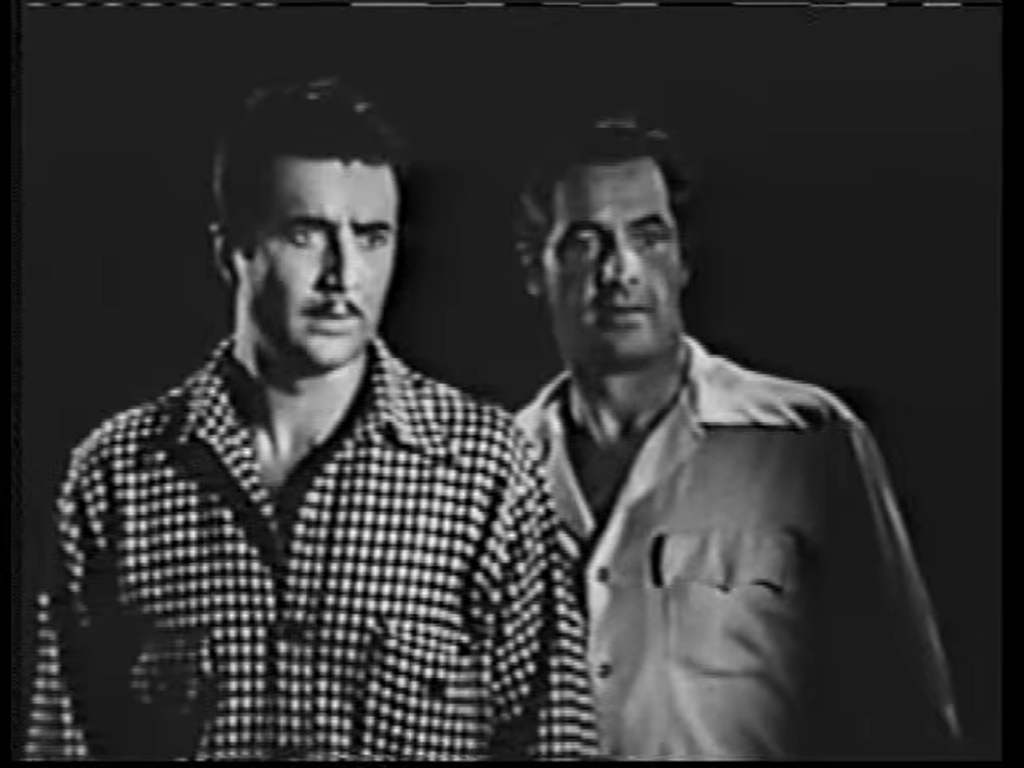-
#454 – Radar Patrol vs Spy King (1949)
Radar Patrol vs Spy King (1949)
Film review #454
Director: Fred C. Brannon
SYNOPSIS: A new radar defense system is being constructed that will cover the entire United States, but it’s completion is being interrupted by a series of attacks led by neo-nazi spy John Baroda and his henchman. Chris Calvert, agent for the Radar Defense Bureau, is assigned to supervise the completion of the radar with the help of Joan Hughes, who is in charge of the project. Together with Mexican agent Lt Manuel Agura, they work to complete the radar station while stopping The Spy King Baroda and his henchman from preparing a foreign invasion…
THOUGHTS/ANALYSIS: Radar Patrol vs Spy King is a 1949 serial comprised of twelve chapters. The serial opens up with the usual display of explosions signifying attacks that are disrupting the completion of a new radar system across the United States. The attacks are being led by “The Spy King” John Baroda, alongside his assistant Nitra and their henchman, who intends to disrupt the radar system in aid of a foreign power. Radar defense bureau operative Chris Calvert is assigned to the project, being developed by Joan Hughes, and they work together with Mexican agent Lt Manuel Agura to bring down the Spy King. The plot follows a very typical serial format, with each chapter usually beginning with the heroes or villains explaining what is going to happen in the current chapter, and then…you watch it happen. There’s never any real surprises, and the set-ups and chase scenes have all been done before. There’s a fair amount of explosions and action that form the basis of the cliff-hangers, but they are resolved in a nonchalant way as usual.
Heading up the heroes is Chris Calvert, the typical male lead with no distinguishing features whatsoever. Joan Hughes as the typical sole female character, although she does have a job other than secretary or reporter, and she only gets kidnapped once, both of which are rare for women in these serials. The villain is rather uninteresting, and the character of a Neo-Nazi spy is a trope that was used during the war and a while after for villains, as the fear of “the enemy within” and saboteurs that live among us was a theme that was quite powerful, and continued for many years after. I recognise some of the actors as being in other serials, which is a sign that I have watched way too many of these, and also that a lot of them are completely interchangeable in different serials; the actors that play the henchman always play them, and a lot of the female characters are played by the few female actors of the time.
As mentioned, the action scenes and explosions are decently done, and give the serial a bit of excitement, but there’s very little in terms of the plot or characters which sets itself apart from any other serial. The cliffhangers are sometimes a bit more inventive, but that’s all that stands out. Given that this serial came out past the peak of the format’s popularity, there is not much original that could have been done. The acting shows it’s weakness in the dialogue that awkwardly explains the plot rather than showing it, but for the rest of the time it’s passable. Overall, Radar Patrol vs Spy King is nothing special, and falls into the large pile of forgettable serials. It doesn’t have any huge problems, but avoids anything too disastrous in its production to make it any less than average.
-
#388 – King of the Rocket Men (1949)
King of the Rocket Men (1949)
Film review #388
Director: Fred C. Brannon
SYNOPSIS: A man calling himself Dr. Vulcan is killing off prominent scientists. After one such scientist, Dr. Millard manages to escape an attempt on his life, he goes into hiding and develops a rocket suit that allows the wearer to fly through the skies. He enlists fellow scientist Jeff King to wear the rocket suit and thwart Dr. Vulcan’s schemes.
THOUGHTS/ANALYSIS: King of the Rocket Men is a 1949 sci-fi serial. The story opens up with the mysterious Dr. Vulcan killing off members of the Science Associates, a group of top scientists. One such member, Dr. Millard, manages to escape one of Vulcan’s traps and goes into hiding, leading Vulcan to believe he is dead. While in hiding, Millard completes his invention of a rocket suit that allows the wearer to fly thanks to a jet pack. Millard enlists the help of Jeff King, another member of Science Associates to wear the suit and track down Dr. Vulcan. The story involves the usual serial tropes, with Dr. Vulcan’s true identity being hidden throughout the serial until the end, and with King figuring out the Vulcan is actually one of the members of Science Associates, he has to work out which one it is, which again is a familiar set-up for these serials. Some of the chapters provide a bit of variety, such as the one where King’s ally Ted suspecting King to be Vulcan and vice versa, which leads to an interesting confrontation, and one which I have not seen before in the serial format, but other than that its the usual back-and-forth between heroes and villains chasing each other down with various plans and traps.
The highlight of this serial has got to be the rocket suit, which allows King (and sometimes Millard) to fly through the air. This is the first serial of three to use the rocket suit, but the only to refer to the hero as “rocket man”. The other two, Radar Men from the Moon and Zombies of the Stratosphere, are all unconnected from one another, and do not give the masked hero a name. Since this serial like most is aimed at getting young viewers into the theatre each week for the next chapter, the rocket suit would definitely have been a hit with them, as there really wasn’t anything like it when it came out. Older viewers would perhaps have been less than engaged with all the usual tropes being wheeled out, but the serial isn’t really for them. There’s plenty of other inventions shown throughout the serial which are interesting enough to change up the pacing, but ultimately it does rely on the tried and tested serial elements.
The end of the film also deserves note, as in some sense the villain wins. Dr. Vulcan steals a device known as the Decimator, and uses it on a tectonic fault-line, causing a huge tidal wave that essentially destroys Manhattan. The footage of the tidal wave is taken from the 1931 film Deluge, in which a rising of sea levels causes most of the world’s population to be wiped out. The destruction looks good and devastating, and it still holds up despite being made nearly twenty years earlier, but obviously if you’ve seen it before it lessens its impact being used a second time here. Nevertheless, it’s very unlikely viewers of this serial would have seen it being used in Deluge due to the time elapsed and there being no re-runs or home releases back then. King manages to eventually stop Dr. Vulcan, but after New York City has been destroyed, and the serial ends with the ambiguous promise to rebuild New York ‘better than ever’. Not exactly a solid resolution, but these serial never are after investing nearly three hours watching them. King of the Rocket Men was released in 1949, after the serial format had peaked, but there were still some good ones being released (most notably the Superman serials, which were quite popular, and some of the best examples of the format). “Rocket man” is somewhat a superhero, with his flying ability and masked persona, and this no doubt would have made the serial stand out, but a lot of the other elements of the serial are pretty standard for the format. Overall it’s a little more interesting than the average serial, but not outstanding.
-
#373 – Brick Bradford (1949)
Brick Bradford (1949)
Film review #373
Director: Spencer Gordon Bennet
SYNOPSIS: Brick Bradford and his friends are assigned to visit the lodge of the scientist Doctor Tymak, who has developed “interceptor ray” that can intercept and destroy enemy rockets. It’s potential to be developed into a death ray as well has attracted the attention of the foreign spy Laydron, who wants to steal the ray. Brick and his friends must fight to keep the ray from falling into the wrong hands, and help Tymak finish his research as they travel across time and space to defeat the villainous Laydron and his goons…
THOUGHTS/ANALYSIS: Brick Bradford is a 1949 movie serial based on the comic strips of the same name. The opening introduces Brick Bradford and his friends Sandy Sanderson (yes that is apparently his real name), Professor Salisbury and his daughter Jane. They are visited by a U.N. official to assigns them to aid the work of Doctor Tymak, a scientist working on a secret project who may be the target of foreign spies. The spy Laydron manages to get to Tymak first, and while Tymak flees, Laydron pretends to be him when Brick and his friends get there in order to capture them. The plot of the serial follows the standard serial setups, with a constant back-and-forth between the heroes and villains, fist fights, getting captured, escaping and daring cliffhangers. I suppose what makes the serial unique is that it is a mix of all the usual elements of the format thrown together into one. For example, the opening third deals with Tymak fleeing to the moon after Laydron trying to capture him and Brick going to rescue him. While there, they get caught up in a civil war between a dictator and the rebels who want to restore democracy. This part of the story is very similar (practically identical) to a Flash Gordon serial, and while it will offer no surprises to viewers familiar to said serial, it offers an interesting setting and some fun traps. The next part of the film involves Brick and Sandy going back in time to find a note buried in a treasure chest that has the formula necessary to complete the interceptor ray. They get caught up in a battle between some sailors and a native tribe and the whole setting again offers something different. The third act revolves around the more standard serial plots of kidnapping, fist fights and chases as Laydron tries to get a hold of the interceptor ray. Add to all this the car chase scenes, invisibility devices and convoluted death traps and you’ve got a full-house in movie serial bingo.
The problem with the story is that while it does have plenty of variety, its different parts feel inconsistent with each other. The first part set on the moon is very similar (identical) to a Flash Gordon serial, and is probably the best written part, with a host of identifiable characters and plenty of danger and traps. The second part set in the 18th century is a bit more light-hearted and silly. With Sandy often making plenty of humourous quips. After these adventures throughout space and time, the final part resorts to the typical back-and-forth between the heroes and villains as they chase each other across the few sets the serial has. This is the weakest part of the serial, as it is difficult to top the first two parts. One reason for this disparity is that each part is written by a different writer, and clearly they all have their own ideas of what should be going on in the serial. The director, Spencer Gordon Bennet, did a number of these film serials, but his expertise doesn’t really fix the problems (he also directed the Batman and Robin, serial and after Brick Bradford the Superman serials, which were much better).
The movie serial format is a very outdated format. It’s multiple episodes re-used the same few sets as they were typically constrained to a low budget and would have to stretch what they had as far as possible (yet would keep viewers coming back to the theatre every week to watch the next instalment). Brick Bradford manages to have a good enough variety of settings thanks to the varied story, and is also aided by the fact that there are plenty of outdoor scenes. Obviously the moon having a breathable atmosphere and people living on it is a bit far-fetched today, but would have been somewhat believable back when the serial was released. The “time top” that Brick and Sandy use to travel back through time in is probably one of the first depictions of a time machine on film too, and I can imagine that it sparked people’s imaginations when they saw it for the first time. The characters themselves are all a bit dry and without merit, and Brick doesn’t really stand out alongside the Flash Gordon’s and Buck Rogers’ of the movie world. Overall, Brick Bradford can best be summed up as a “greatest hits” of the sci-fi movie serial: it has everything it needs from death rays, aliens, time travel, invisibility devices, mobs, car chases, convoluted death traps, all-american heroes, and a single female character. However, all of these elements feel very disjointed from one another, and the mix of writers with different perspectives gives the serial an uneven tone. There is a decent amount of variety throughout the fifteen chapters, but by the end the film has exhausted everything the format has to offer and it clearly shows. A valid attempt with familiar concepts, but nowhere near the best that the serial format has to offer.
